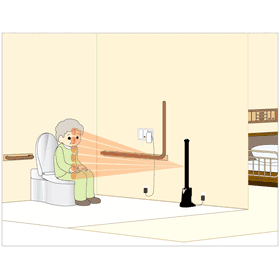Leave fluid flow sensors for grease and similar substances to us!
You can mainly check the application of grease, detect flow, and confirm air intrusion! It features a simple structure that makes it easy to handle while performing flow confirmation. It is used by directly installing it in the middle of piping or on bearings. The compatible fluids are "water," "oil," and "grease."
Inquire About This Product
basic information
Specifications (F1 Type) Operating Pressure: min. 1 (kg/cm²) varies by fluid Pressure Resistance: = max. 100 (kg/cm²) Fluid: Oil to Grease NLGI-2 Temperature: 5 to 60℃ Oil (Minimum Detection Amount) Continuous Flow: 10 (cc/min) Dispensing/Intermittent Flow: 0.06 (cc/st) Grease (Minimum Detection Amount) Continuous Flow: 1 (cc/min) Dispensing/Intermittent Flow: 0.03 (cc/st) If the detection amount is large, it will be the MK type, so please consult with us once! Additionally, there are options with lamp connectors, so you can confirm with the equipment and also perform visual checks.
Price range
Delivery Time
Applications/Examples of results
Flow Switch Application Examples - Injection molding machine (toggle clamp, etc.) → Preventing seizure - Automatic coating line → Confirmation of uncoated or discharge - Lubrication confirmation of furnace fan motor by manual hand pump installation → Preventing seizure - Slide of molding machine → Preventing seizure - Handgun coating process → Confirmation of uncoated - Oil or water below 100 MPa → Lubrication confirmation - Air contamination during replacement of pails, pumps, and grease cans → Confirmation of grease discharge issues - Confirmation of water flow in cooling tower → Confirmation of circulation flow - Confirmation of discharge for chain lubrication → Prevention of uncoated
catalog(2)
Download All CatalogsCompany information
Our company supplies the appropriate amount of lubricants and various liquids to all types of machinery, and we carry out everything from design to equipment manufacturing, installation work, and after-sales service. Currently, our sales range has expanded to include hydraulic and pneumatic systems, electrical equipment, and automation devices, resulting in a diverse array of work activities. Additionally, we are transitioning to high-viscosity fluid pumping and are actively developing devices for precise dispensing of sealants and adhesives.








![Station-type temperature-controlled soldering iron RX-892AS [Free demo unit available for loan]](https://image.mono.ipros.com/public/product/image/ea7/2000049139/IPROS01272997833917435886.jpeg?w=280&h=280)